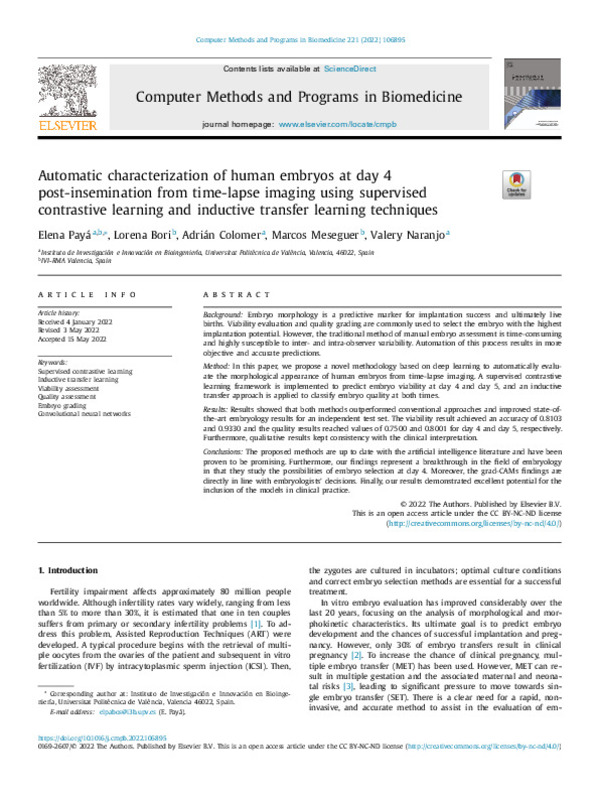JavaScript is disabled for your browser. Some features of this site may not work without it.
Buscar en RiuNet
Listar
Mi cuenta
Estadísticas
Ayuda RiuNet
Admin. UPV
Automatic characterization of human embryos at day 4 post-insemination from time-lapse imaging using supervised contrastive learning and inductive transfer learning techniques
Mostrar el registro completo del ítem
Paya-Bosch, E.; Bori, L.; Colomer, A.; Meseguer, M.; Naranjo Ornedo, V. (2022). Automatic characterization of human embryos at day 4 post-insemination from time-lapse imaging using supervised contrastive learning and inductive transfer learning techniques. Computer Methods and Programs in Biomedicine. 221(106895):1-12. https://doi.org/10.1016/j.cmpb.2022.106895
Por favor, use este identificador para citar o enlazar este ítem: http://hdl.handle.net/10251/192603
Ficheros en el ítem
Metadatos del ítem
| Título: | Automatic characterization of human embryos at day 4 post-insemination from time-lapse imaging using supervised contrastive learning and inductive transfer learning techniques | |
| Autor: | Bori, Lorena Meseguer, Marcos | |
| Entidad UPV: |
|
|
| Fecha difusión: |
|
|
| Resumen: |
[EN] Embryo morphology is a predictive marker for implantation success and ultimately live births. Viability evaluation and quality grading are commonly used to select the embryo with the highest implantation potential. ...[+]
|
|
| Palabras clave: |
|
|
| Derechos de uso: | Reconocimiento - No comercial - Sin obra derivada (by-nc-nd) | |
| Fuente: |
|
|
| DOI: |
|
|
| Editorial: |
|
|
| Versión del editor: | https://doi.org/10.1016/j.cmpb.2022.106895 | |
| Código del Proyecto: |
|
|
| Agradecimientos: |
This work has been partially funded by Agencia Valenciana de la Innovacion (AVI) (2002-VLC-011-MM) . The work of Elena Pay Bosch has been supported by the Spanish Government (DIN2018-009911) and the work of Valery Naranjo ...[+]
|
|
| Tipo: |
|









